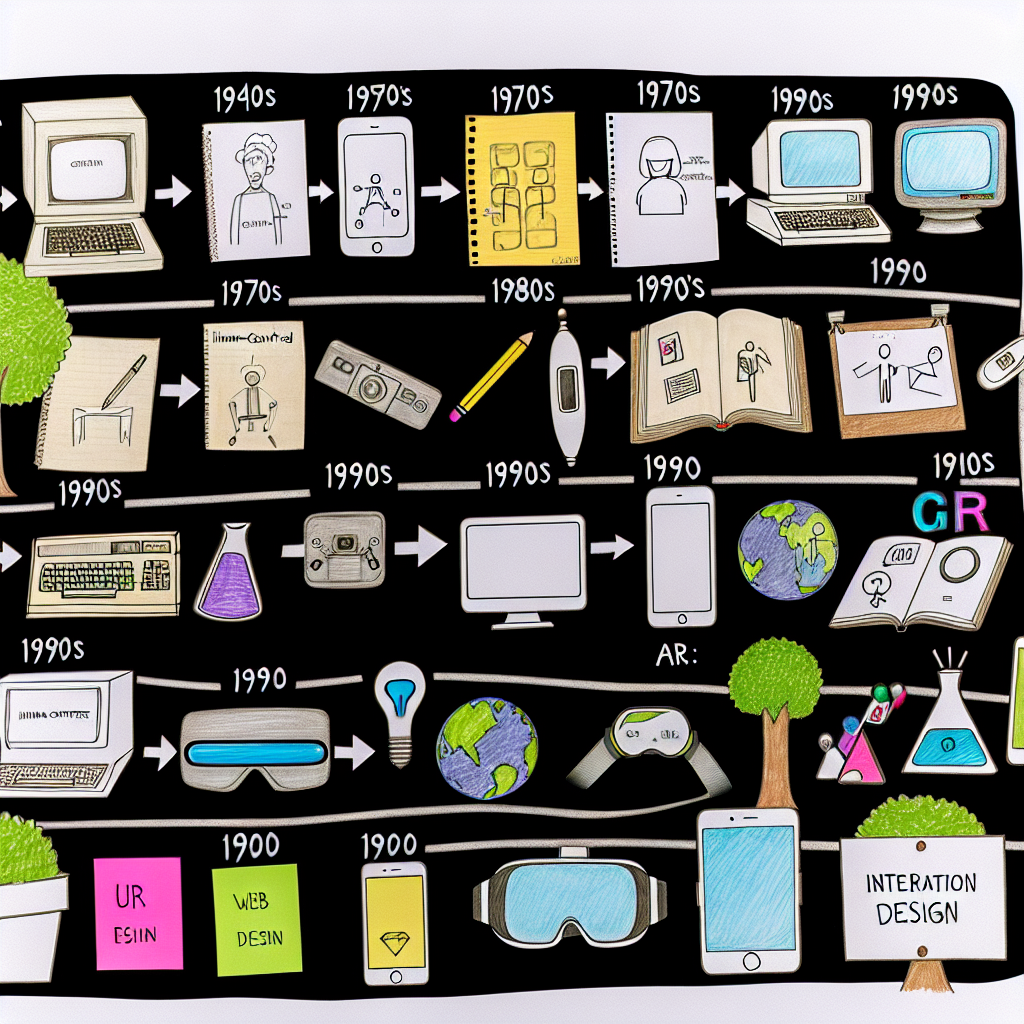Exploring the Rich History of UX Design: Key Milestones and Evolution
User Experience (UX) design is a crucial aspect of digital and interaction design, significantly impacting how users engage with products and services.
Early Beginnings of UX Design
Although the term “UX design” gained popularity in the late 20th century, the roots of user experience can be traced back to the early human-computer interaction studies in the 1940s. Visionaries like Vannevar Bush, who conceptualized the Memex, laid the groundwork for modern UX concepts. This period primarily focused on improving efficiency and the ergonomic aspects of human-machine interaction.
The Influence of Cognitive Psychology
In the 1950s and 1960s, cognitive psychology began to influence UX design. Researchers like Donald Norman, who later coined the term “user experience,” studied how people perceive and process information. These insights were crucial for developing user-centered design principles, emphasizing the importance of designing with the user in mind. Norman’s work at Apple in the 1990s helped solidify these concepts within the tech industry.
The Birth of Human-Centered Design
The 1970s saw the emergence of human-centered design, a methodology that prioritizes the needs, behaviors, and limitations of the end-user at every stage of the design process. Companies like Xerox PARC were pioneers in incorporating these principles into their research and development processes, leading to the creation of more intuitive and user-friendly technologies.
The Rise of Graphic User Interfaces (GUIs)
With the advent of personal computing in the 1980s, the need for more sophisticated and intuitive user interfaces grew. This era was marked by the introduction of graphical user interfaces (GUIs) by companies like Apple and Microsoft. The Macintosh, for instance, revolutionized UX design by making computing accessible to the average user through visual metaphors like icons and windows, setting new standards for usability and design.
The Internet Era and Web Design
The 1990s brought the Internet into the mainstream, transforming the landscape of UX design. Early web design was often cluttered and hard to navigate, but as websites became integral to business and daily life, the demand for better UX grew. This period saw the development of essential web design principles, including responsive design, which ensures usability across various devices and screen sizes.
Mobile Revolution and Responsive Design
The late 2000s and early 2010s saw a significant shift in UX design with the rise of smartphones and tablets. The introduction of the iPhone in 2007 was a turning point, emphasizing the need for mobile-friendly designs. Responsive design, ensuring consistent user experiences across different devices, became a standard practice in UX design.
Current Trends and Future Directions
Today, UX design continues to evolve rapidly with advancements in technology and changing user expectations. Current trends include voice user interfaces (VUIs), augmented reality (AR), and virtual reality (VR), which offer immersive user experiences. Additionally, AI-driven personalization and automation are becoming more prominent, enabling designers to create more tailored and intuitive user experiences.
FAQs
What are the key principles of UX design?
Fundamental principles of UX design include usability, accessibility, and desirability. Usability ensures that products are easy to use and understand. Accessibility makes sure that products are usable by people with different abilities. Desirability influences how visually appealing and engaging a product is to the user.
Why is human-centered design important in UX?
Human-centered design is crucial because it places the user at the center of the design process, ensuring that the final product meets their needs and expectations. This approach leads to higher user satisfaction and better product performance in the market.
How has mobile technology changed UX design?
Mobile technology has drastically changed UX design by introducing the need for responsive and adaptive designs. Ensuring that websites and applications work seamlessly across various screen sizes and devices has become a standard practice. Additionally, mobile-first design focuses on designing for the smallest screen first and scaling up, ensuring an optimal user experience on mobile devices.
What role does cognitive psychology play in UX design?
Cognitive psychology plays a vital role in UX design by providing insights into how users think, process information, and make decisions. This knowledge helps designers create more intuitive and user-friendly interfaces, enhancing overall user satisfaction and effectiveness.
For more information and updates on the history and evolution of UX design, visit NNGroup.





